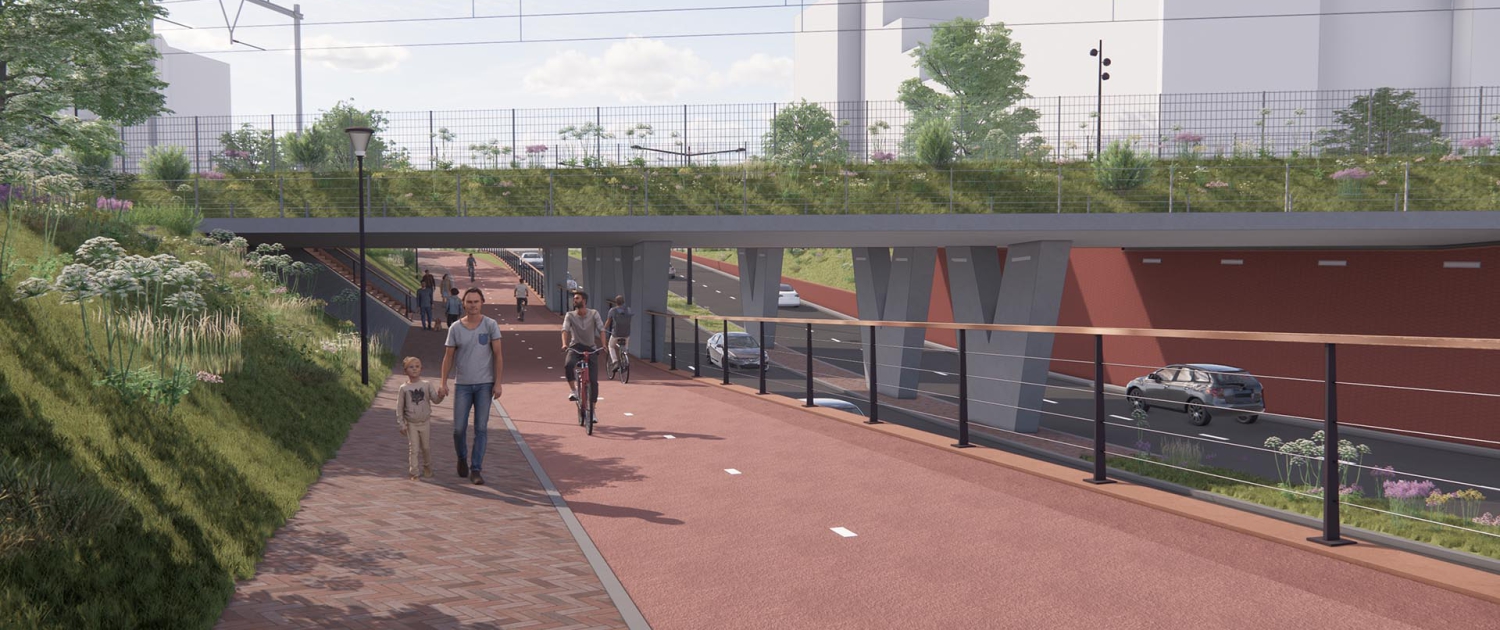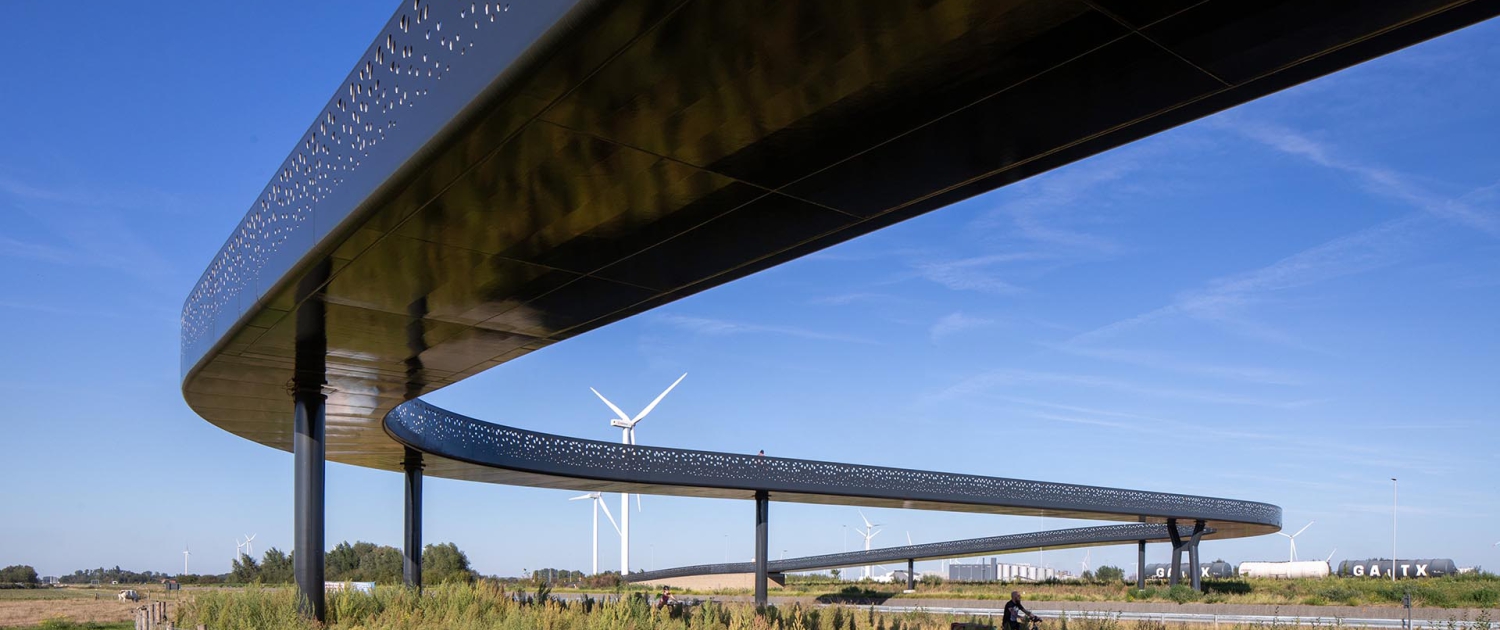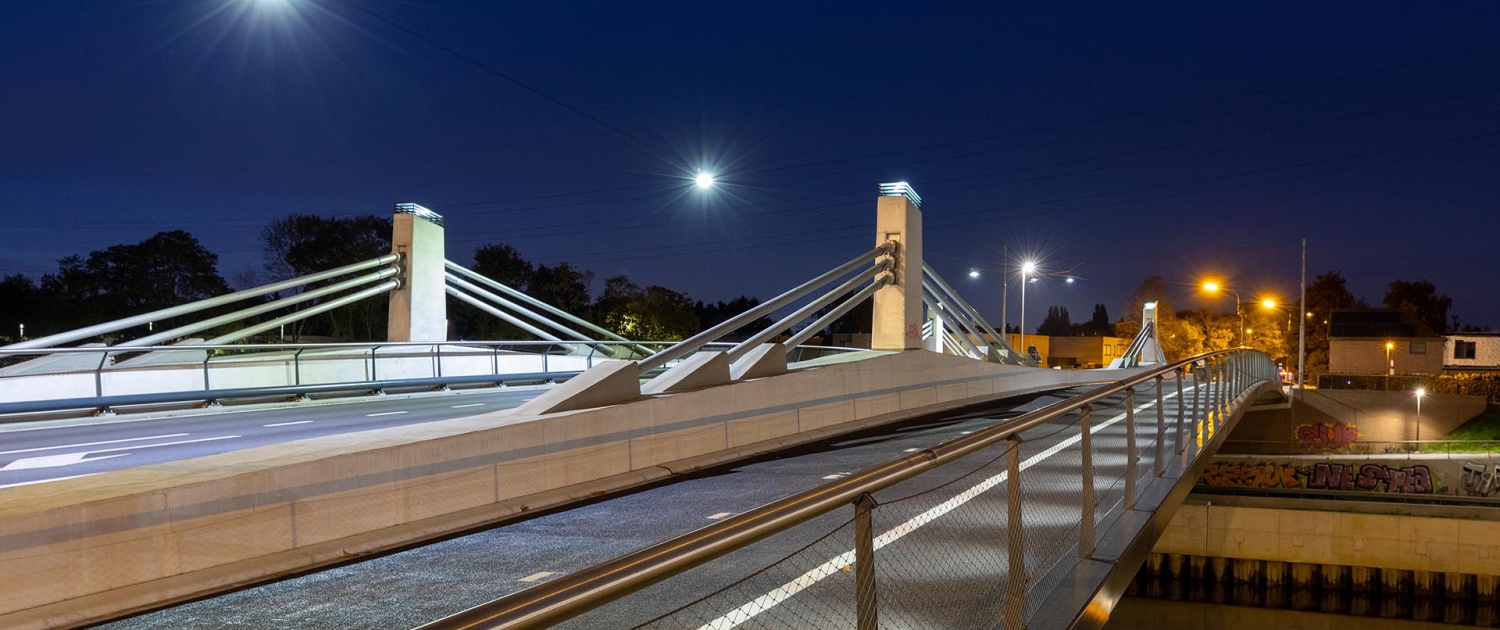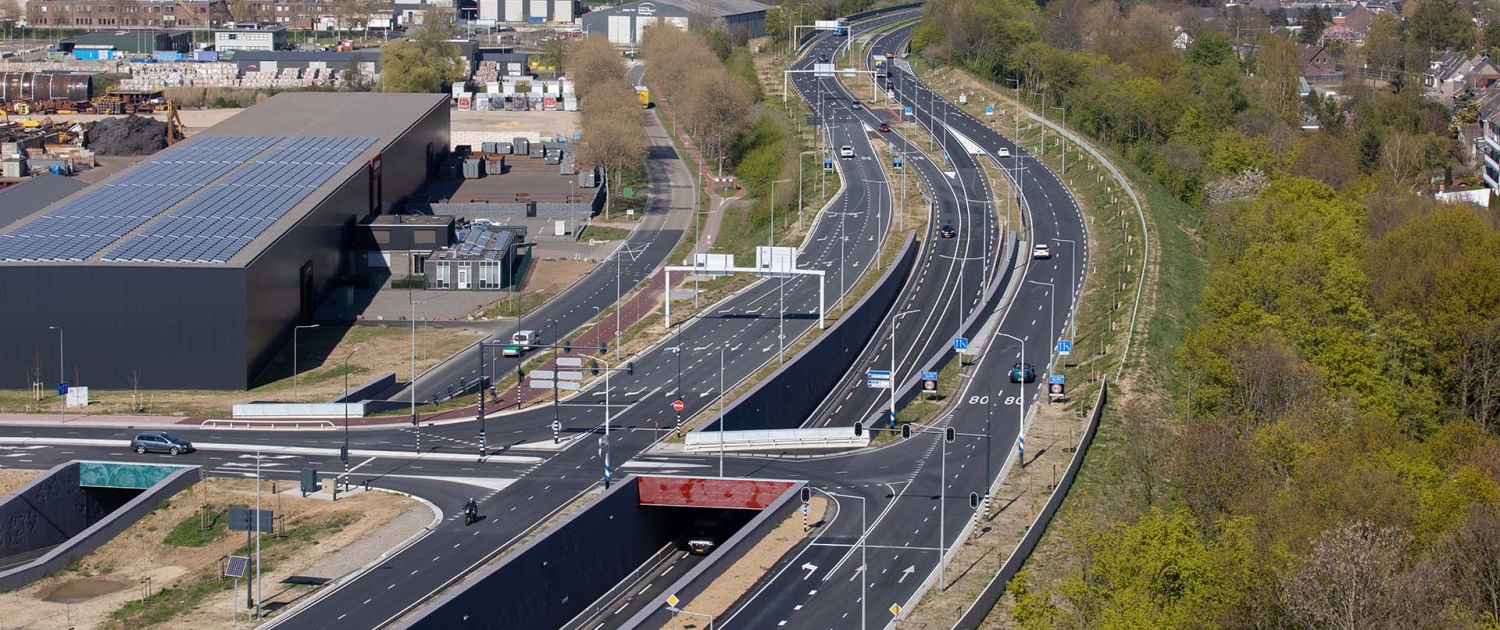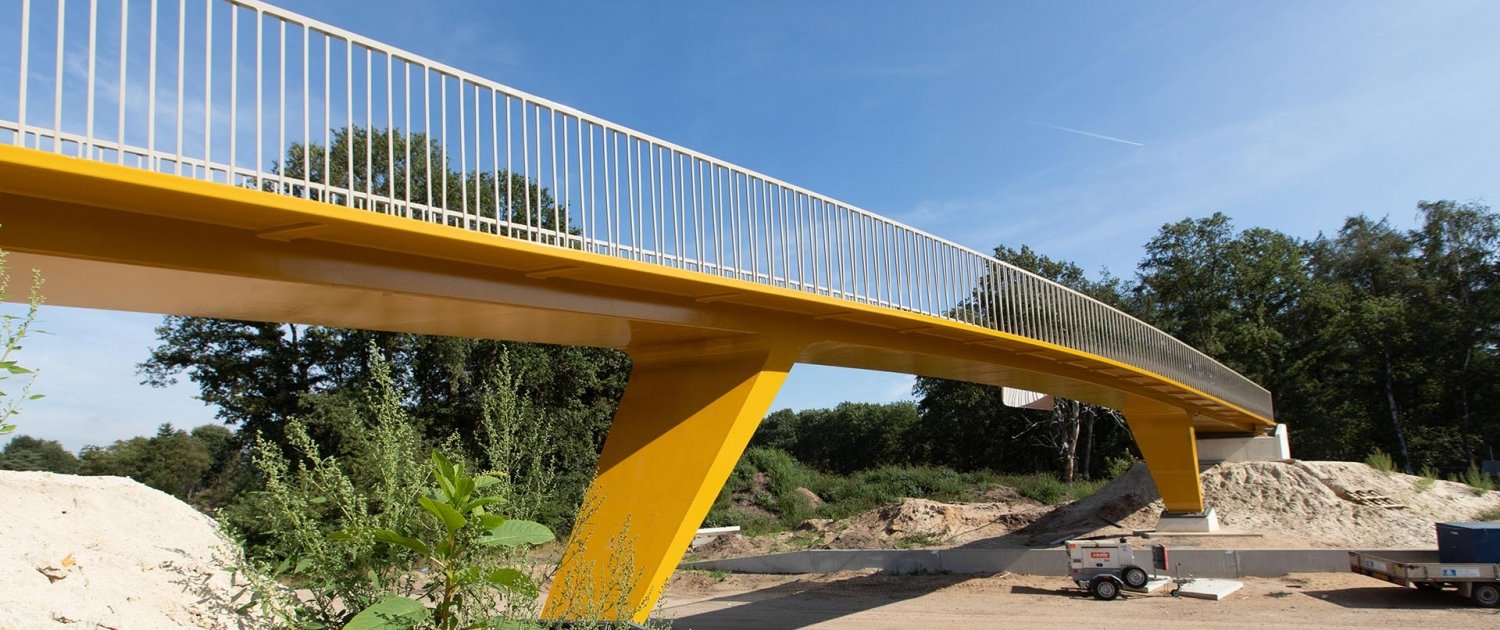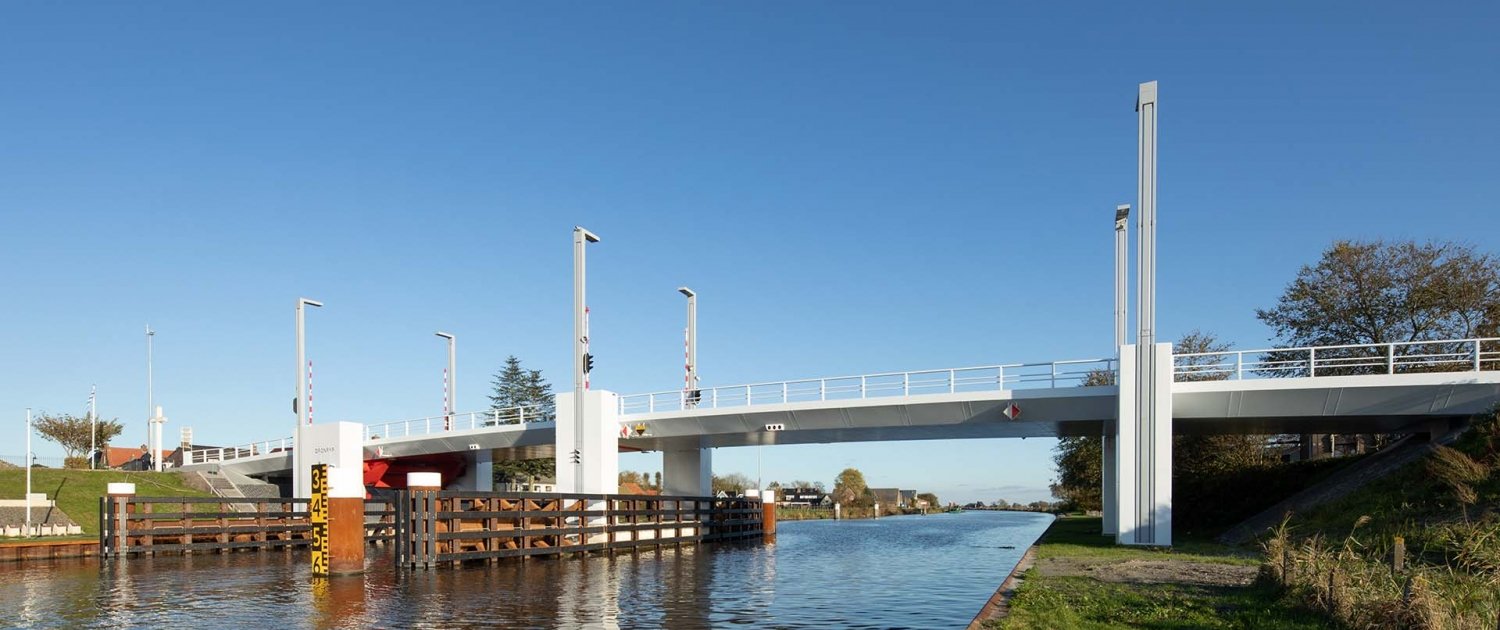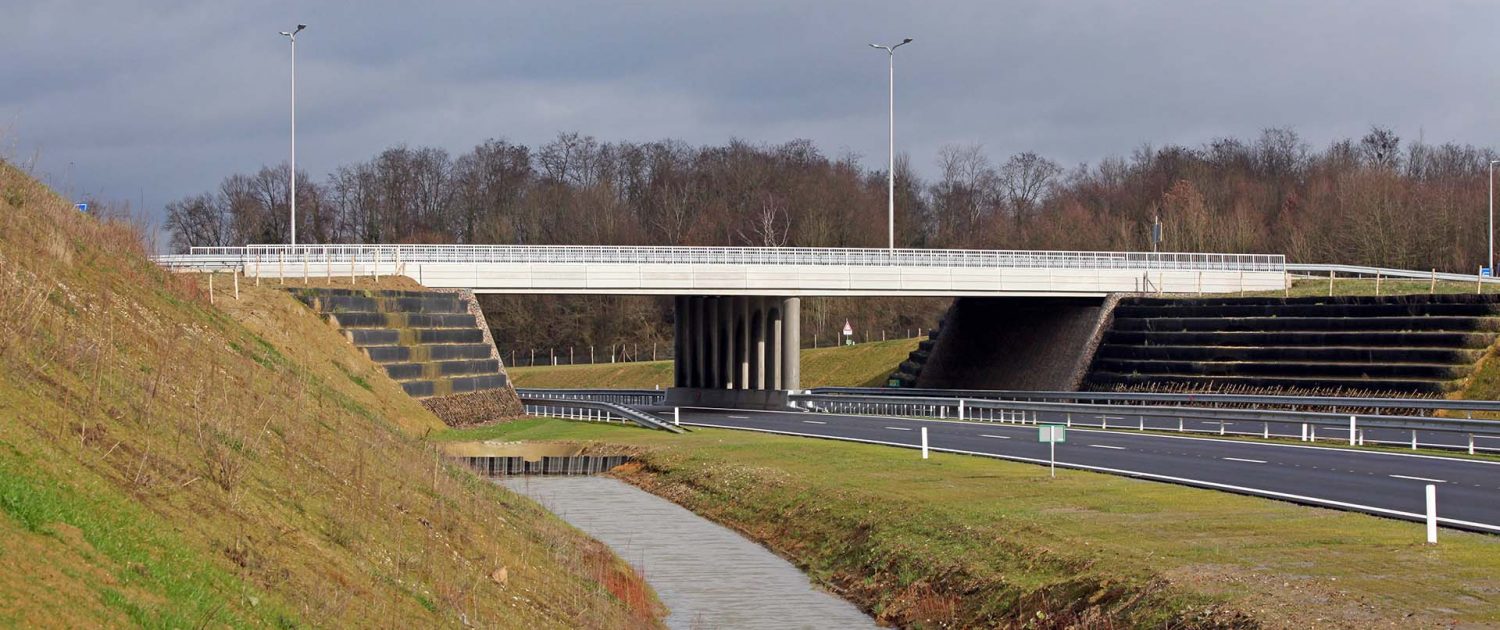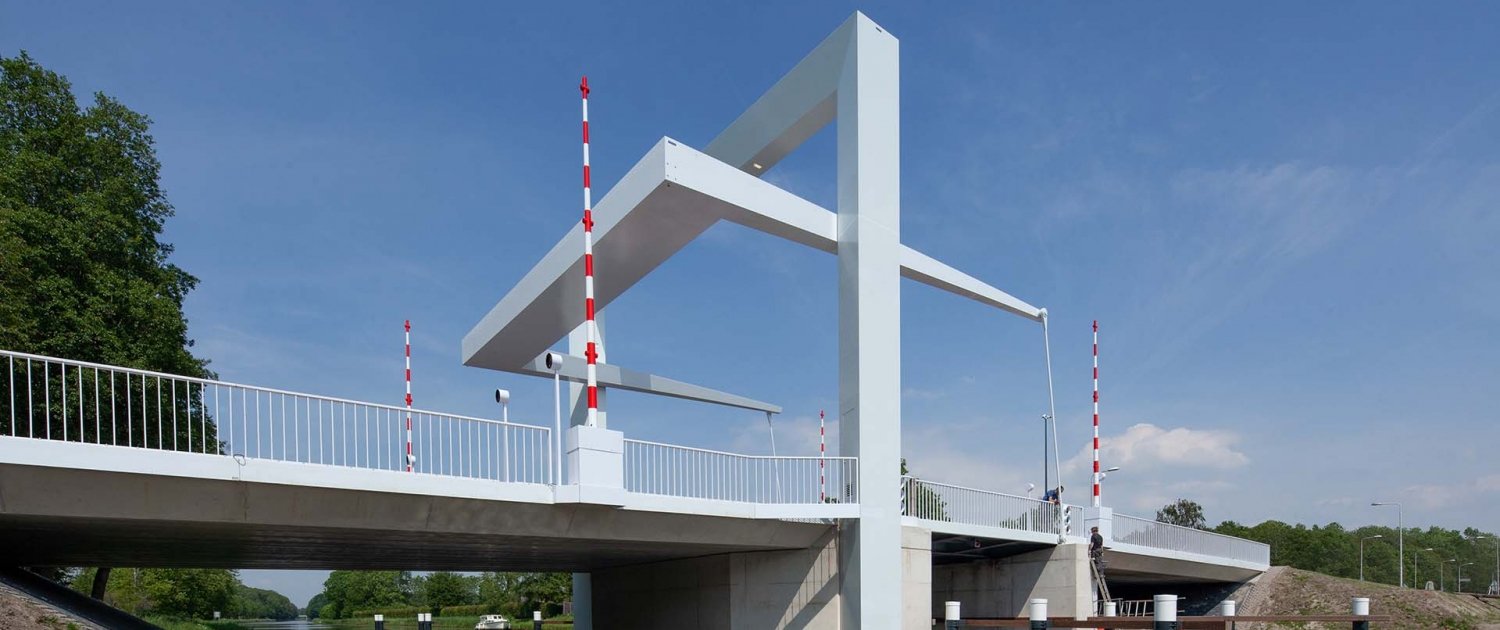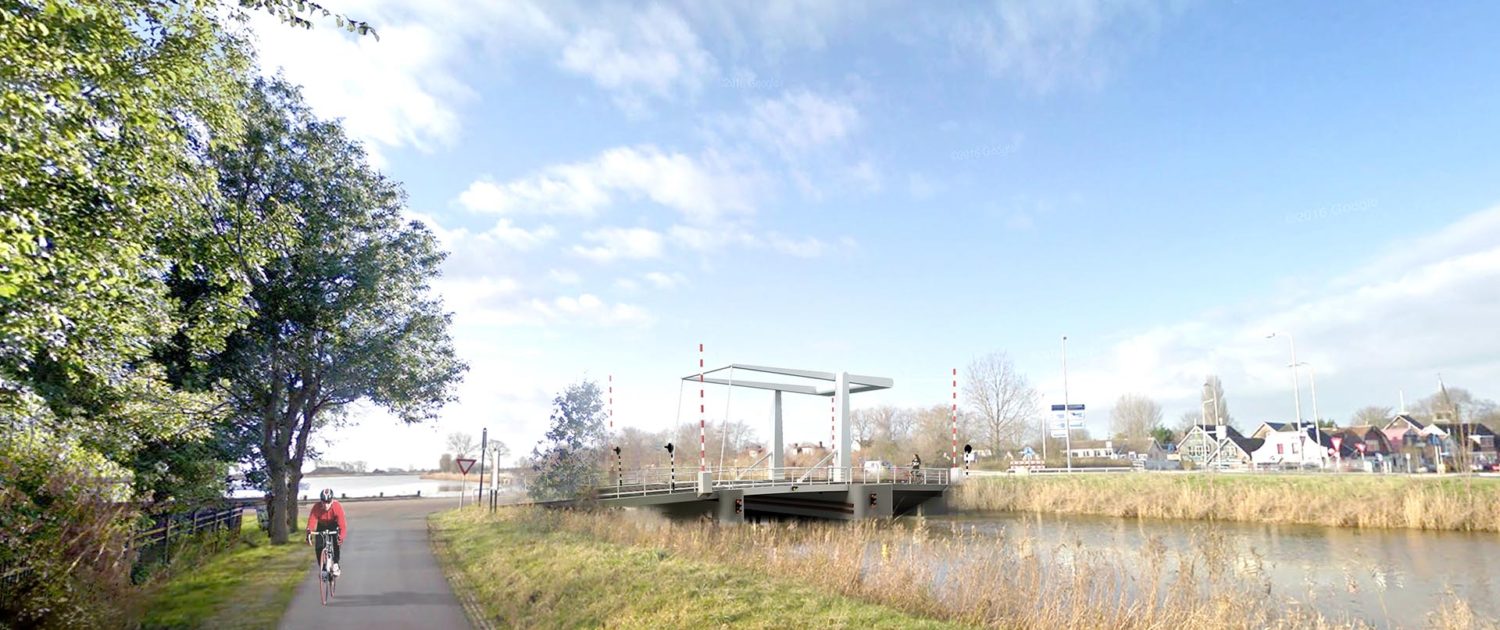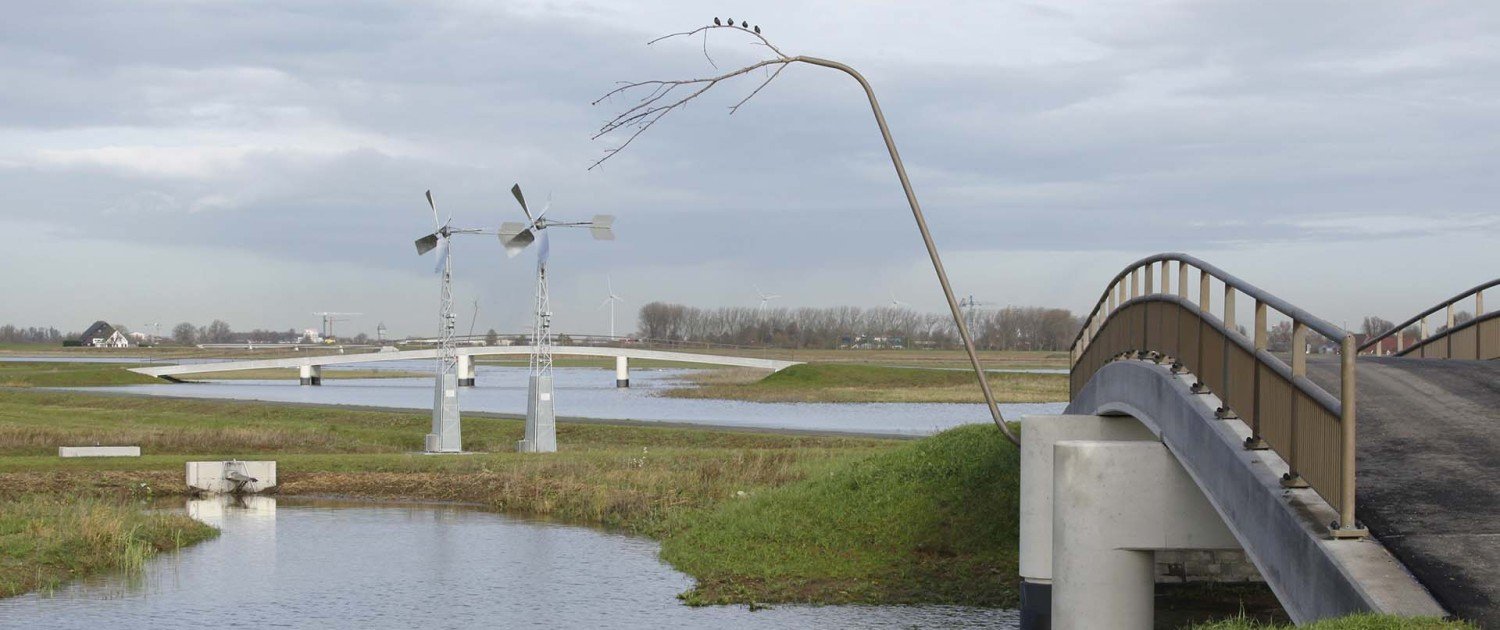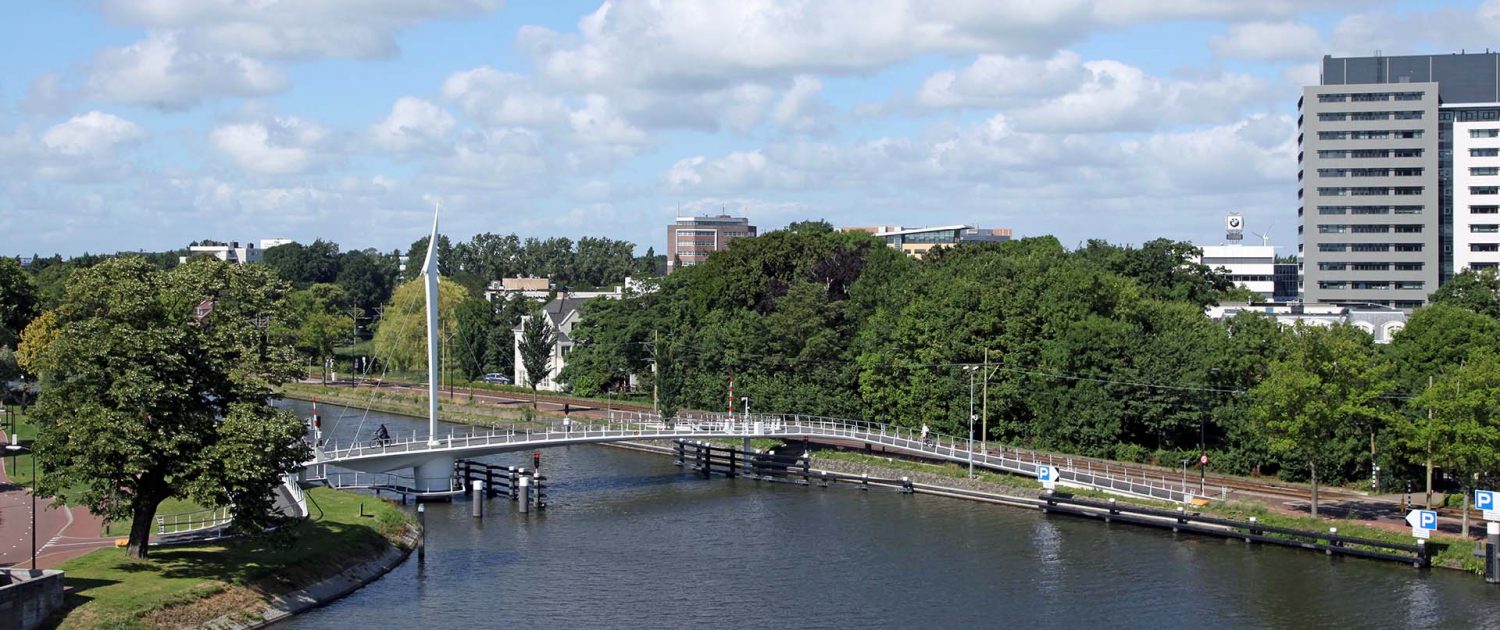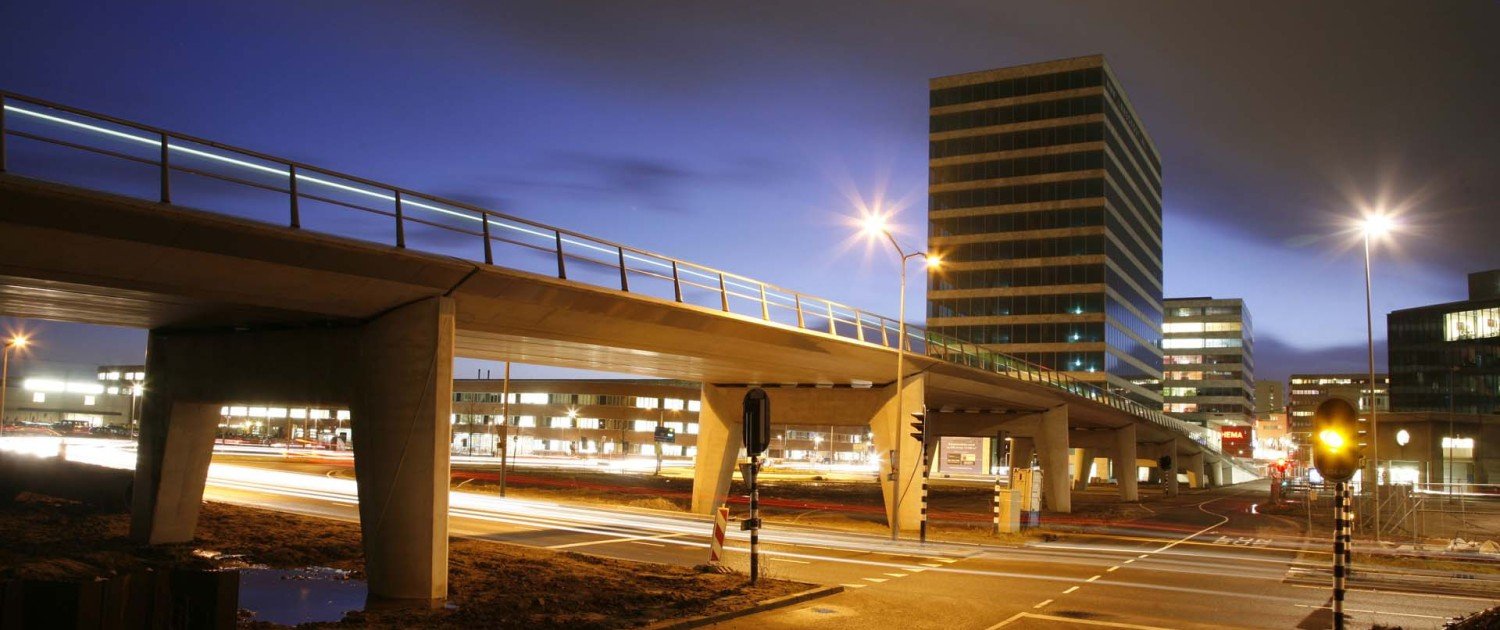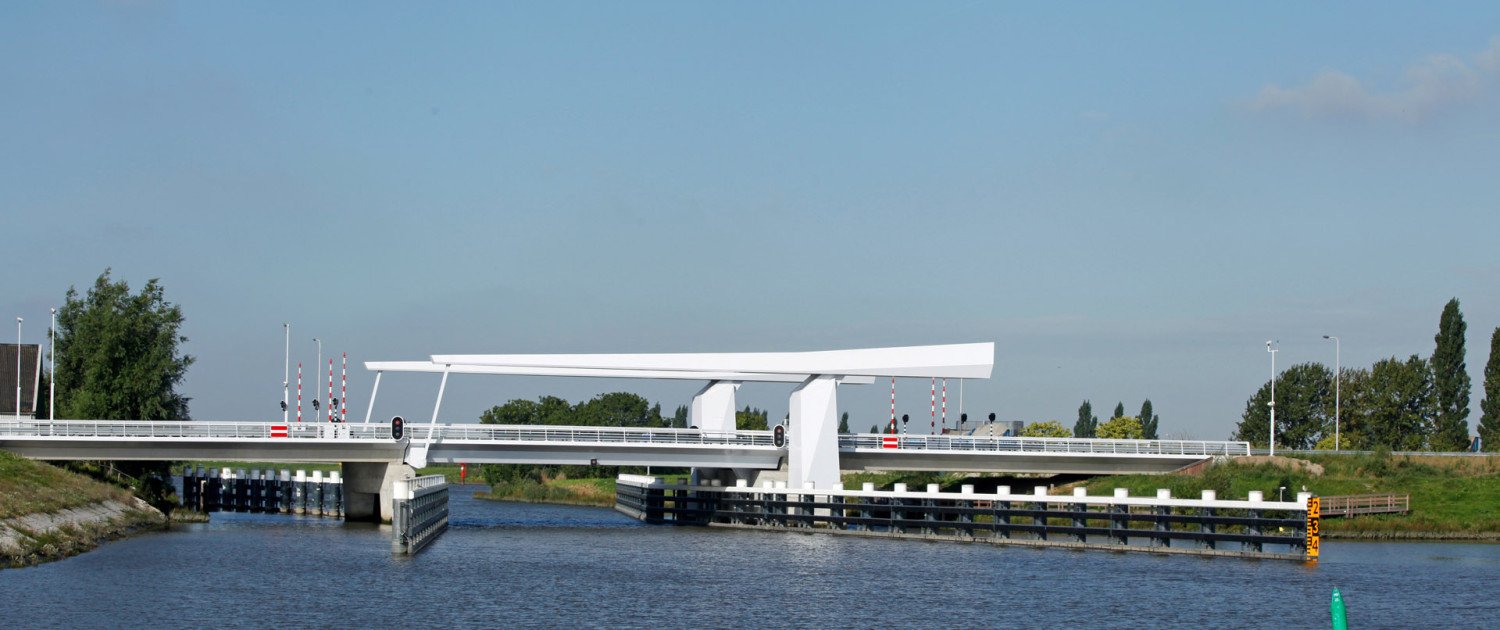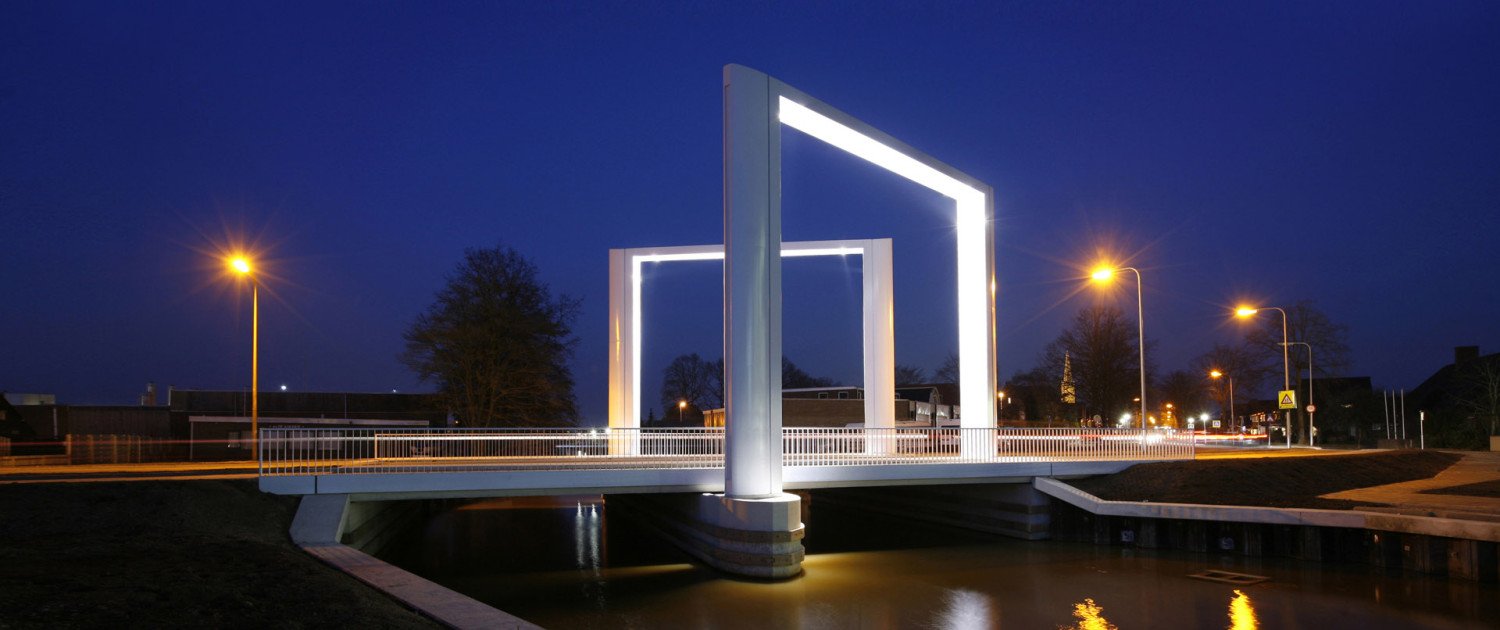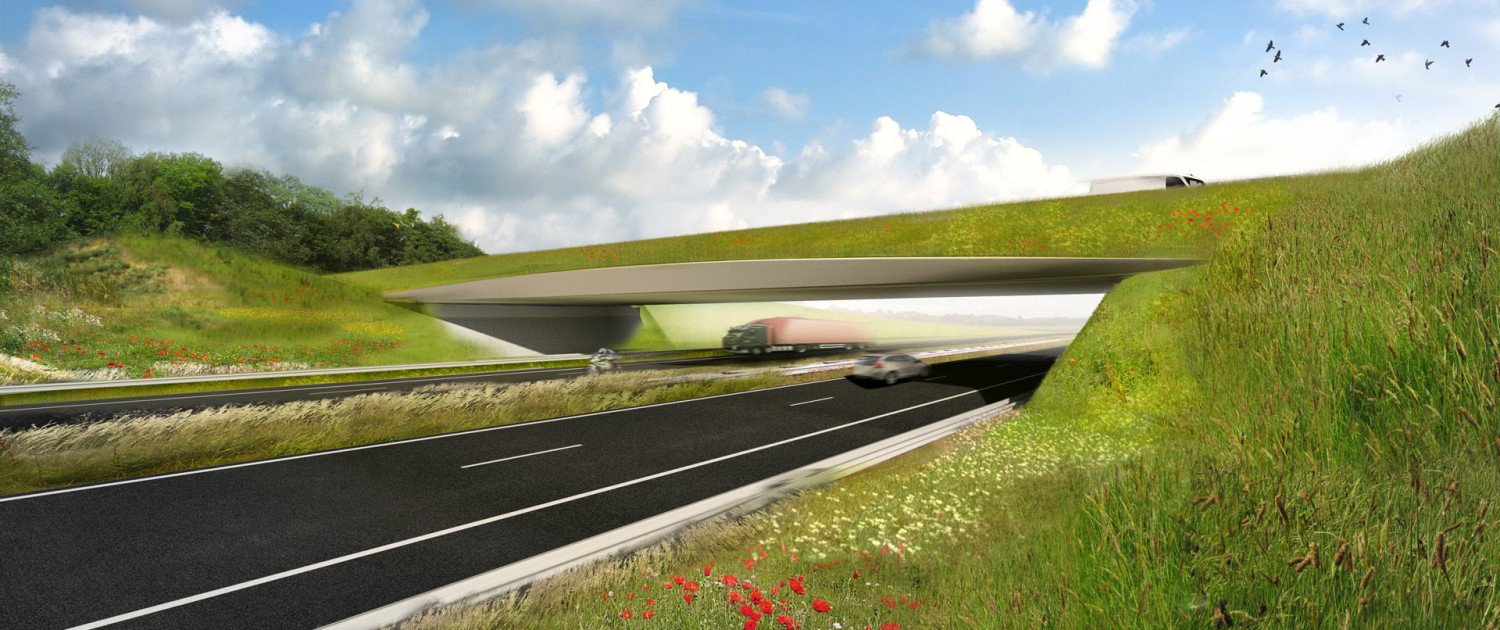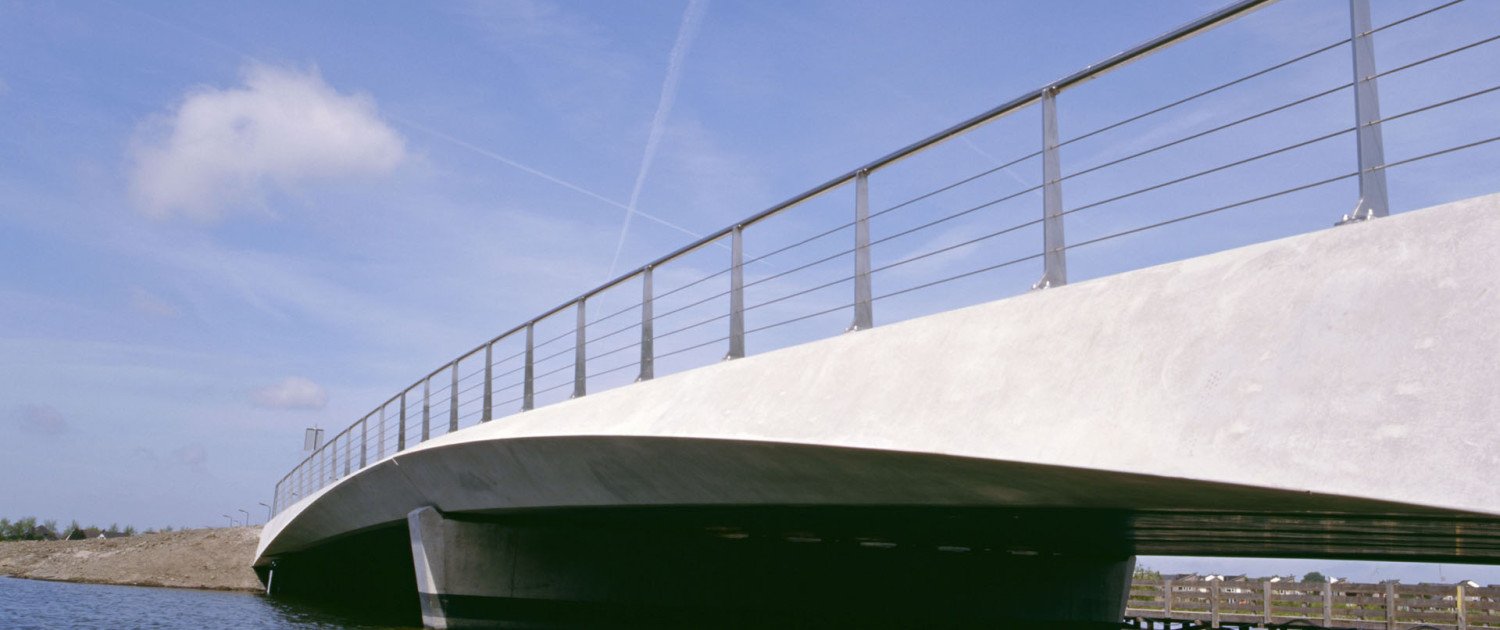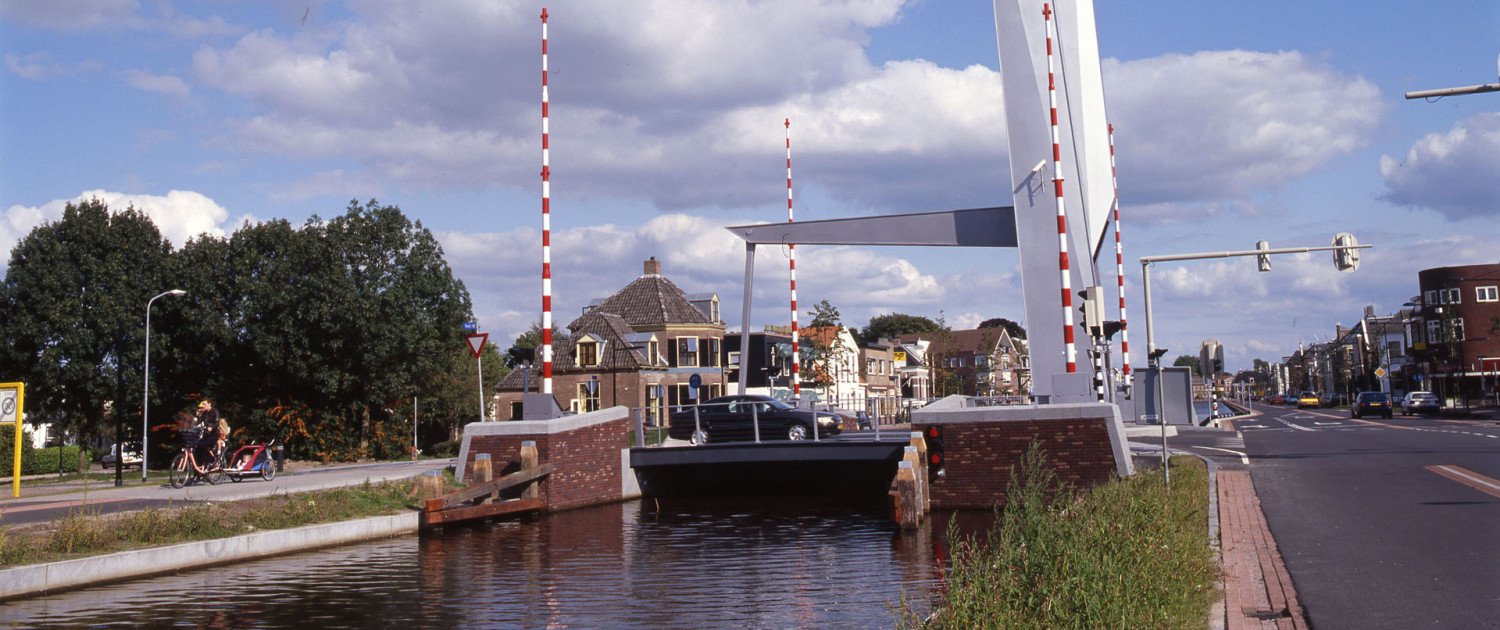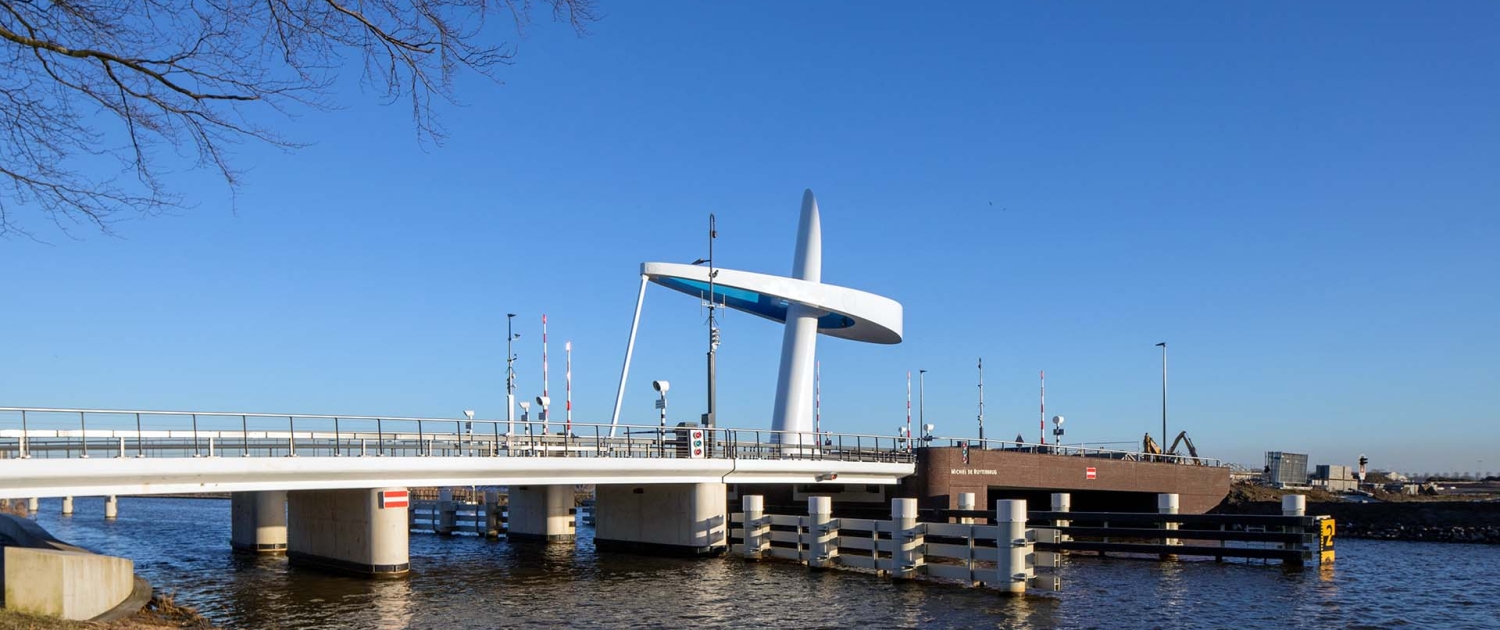
landmark
The Dutch fishing village of Urk has a new landmark! On June 1st the Michiel de Ruyter bridge across the Urkervaart main waterway was officially opened. The iconic movable bridge is designed by Dutch bridge design office ipv Delft. The bridge’s pylon and counterbalance together resemble a netting needle, the type of needle fishermen use to repair nets.
social interaction
Right from the start Urk city council made it clear that the Michiel de Ruyter bridge was going to be more than just a bridge. A new landmark was needed, one that would not only be a main connection in the local road network, but one that would also connect the village’s inhabitants and offer them a place to meet up. That is why there is a spacious set of stairs on the south bank, right next to the bridge which offers seating and leads to a fishing spot. On the north bank a footpath alongside the waterway was incorporated in the bridge design. The fact that the councils high ambitions were indeed met, is in large part due to the close collaboration between local government, construction companies (Knipscheer Infrastructuur, Knook Staal en Machinebouw, Ævo), inhabitants and a series of other stakeholders.
local reference
Befitting a true landmark, the bridge stands out in a positive way. First the 13,5-metre high pylon catches the eye, together with the white and blue counterbalance which like a rather literal horizontal counterpart to the vertical tower elegantly wraps around it. When the movable deck is lifted, pylon and counterbalance together form the shape of a netting needle, a needle used by fishermen to repair their nets. The dark blue inner surface of the counterweight and the white tower are illuminated at night, to ensure the bridge functions as a landmark at nighttime too.
robust and transparent
Another thing that stands out, is the fact that this bridge combines a robust and down-to-earth appearance on the southern side and a light, transparent design for the northern part. This emphasizes the transition from the rural and green area north of the canal to a more urban appeal on the south bank, where a large housing development is currently under construction. The movable part of the bridge is located within the northern half, whereas the striking pylon is placed on top of a brickwork intermediate support on the southern half of the bridge. The robust appeal with its brickwork refers to both the historical village centre with its brick houses as well as the architecture of the future part of town which will arise south of the Urkervaart.
safety
Road safety was the main reason for designing two parallel bridge decks. The widest is designated for road traffic, whereas the smaller one will be used by cyclists and pedestrians. Both groups of users will have plenty of space. The movable part of both decks is located more or less in the middle of the total span, which allows all passing vessels to have a clear view of the bridge and the canal ahead. The pylon is located in between the two decks and ties them in to become one bridge
well-thought out detailing
In order for the bridge to look as uncomplicated and strong as possible, all necessary elements such as traffic signs, lighting, cameras, speakers and moving arm barriers have been integrated into the overall design. The detailing was carefully designed to enhance the clean and slick appearance of the bridge as well. The slightly rounded off edge beams of the concrete approach spans for instance connect smoothly to the similarly shaped steel edges of the lifting deck. The steel counterweight is comprised of curved elements in order to create a smoothly curved shape.
unconventional construction method
When it comes to building method, the construction of this bridge was far from standard. To minimize hinderance, the contractors opted for large prefabricated box caissons on top of the underwater foundations instead of the more commonly used and more expensive method of building a construction pit, as the latter would block the waterway. The entire concrete structure was then built in situ on top of these prefabricated caissons. This required a lot of craftsmanship, especially where formwork was concerned because the bridge has quite a few rounded off edges. A temporary carpentry workshop was created next to the bridges building location just for constructing the required formwork. All steal elements were produced in Moerdijk and then transported to Urk by boat.
quality
All parts of the bridge, whether they are steel, concrete or brickwork, have been produced to a very high standard. The end result is a stunning looking landmark that will connect Urk and its inhabitants for many decades to come.
The bridge is currently not in use, as its opening awaits the completion of the connection main road on the south bank which is being constructed.
specifications
length: 55 m
width: 16 m
completion: 2023
more information?
call Chris Wattel:
+ 31 15 750 25 79

project team
Chris Wattel
Gerhard Nijenhuis
share this project:
similar projects



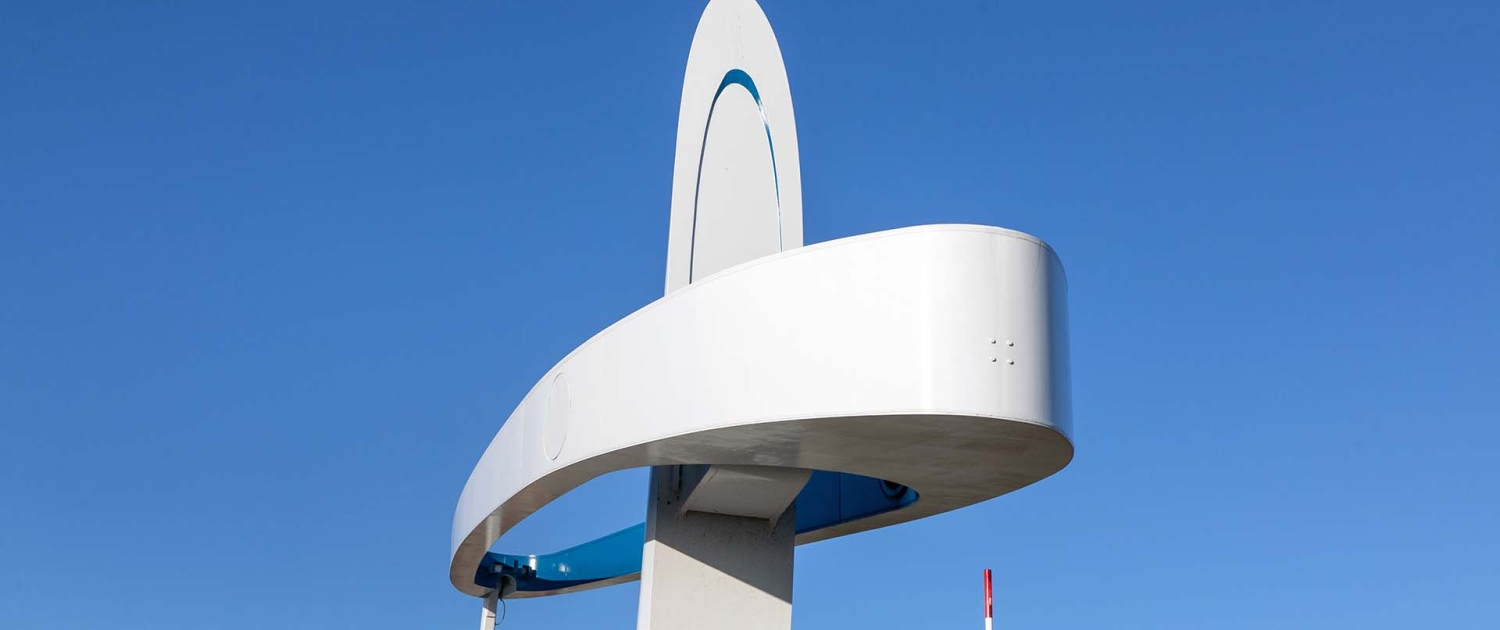
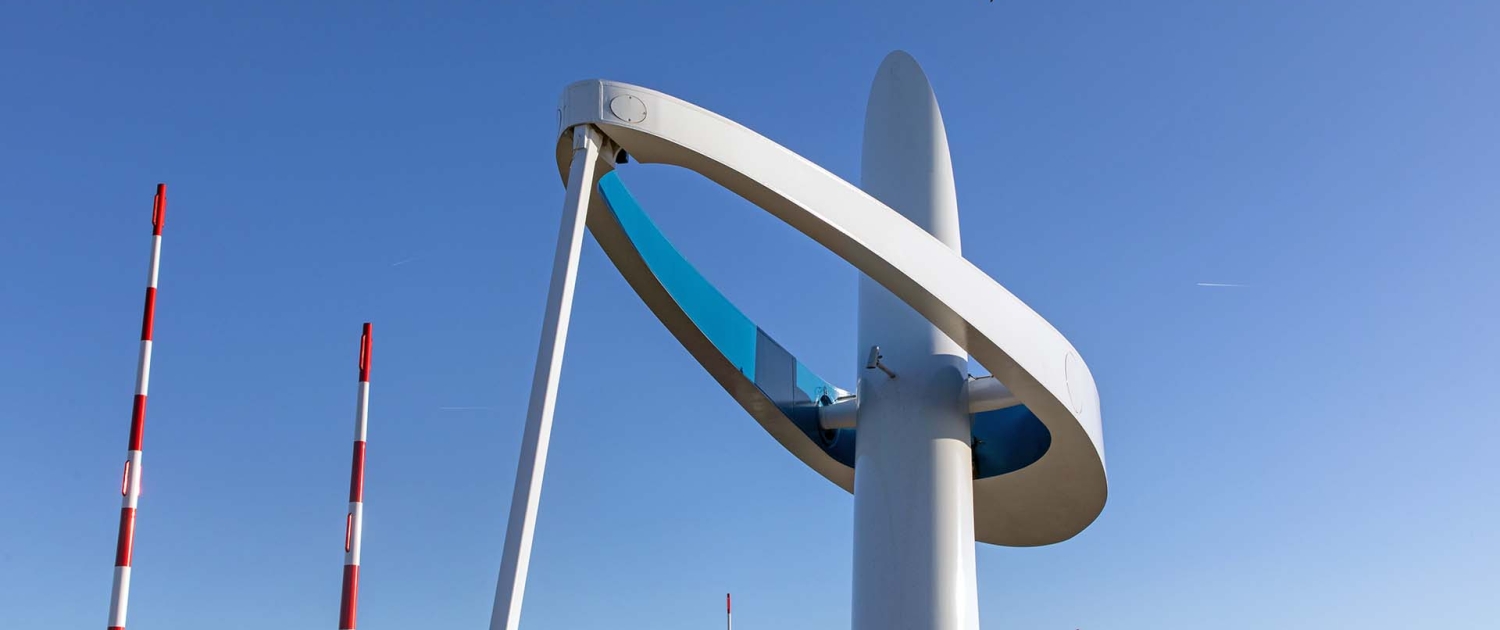
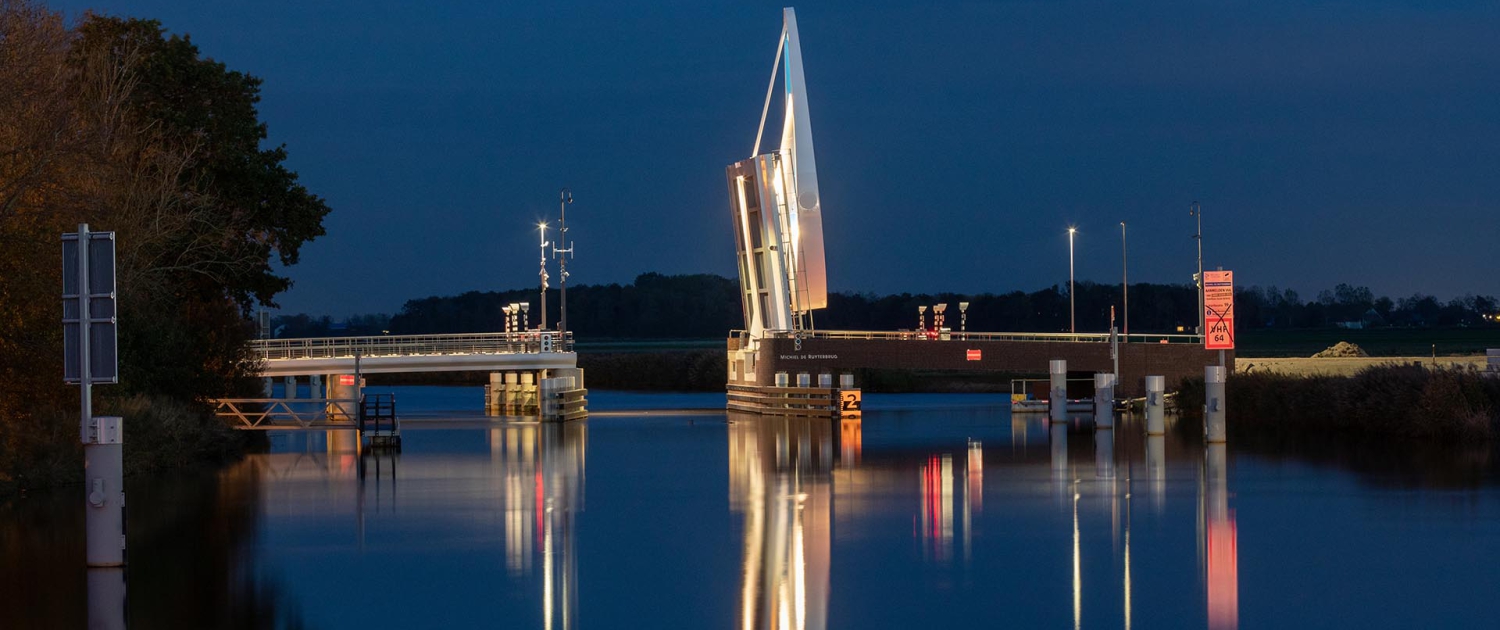
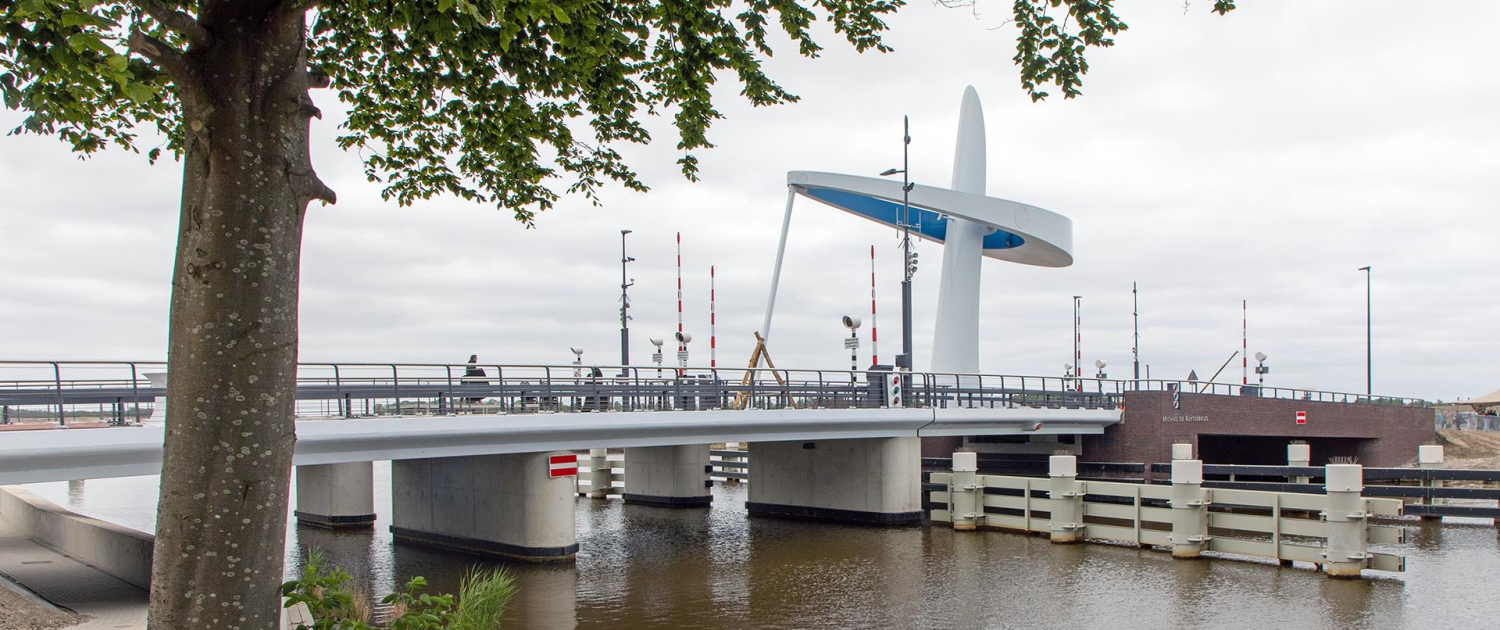
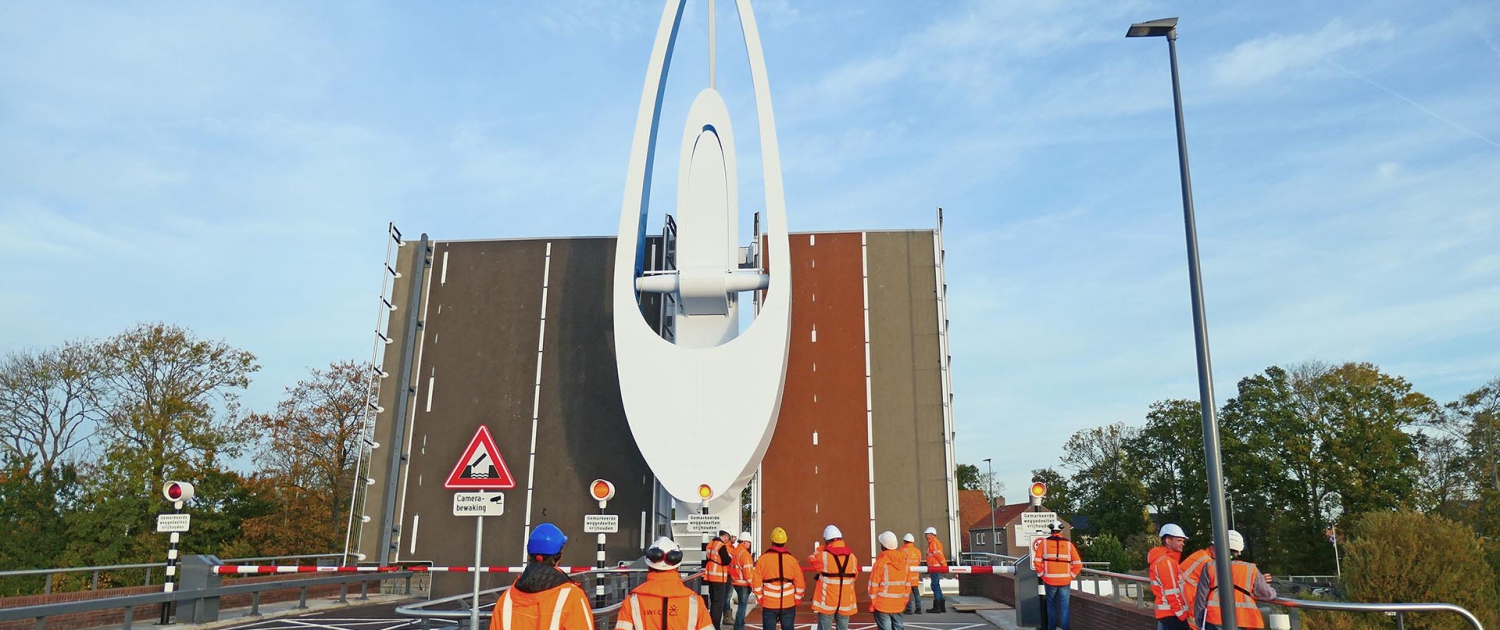
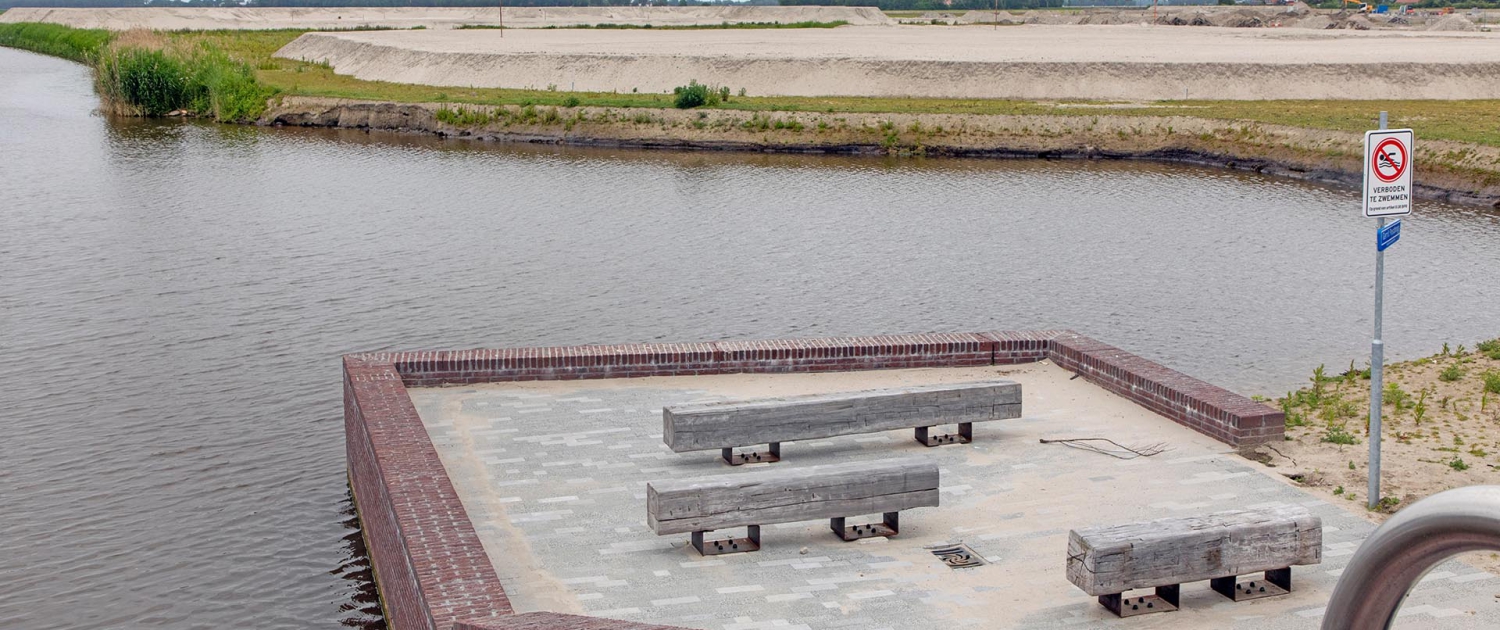
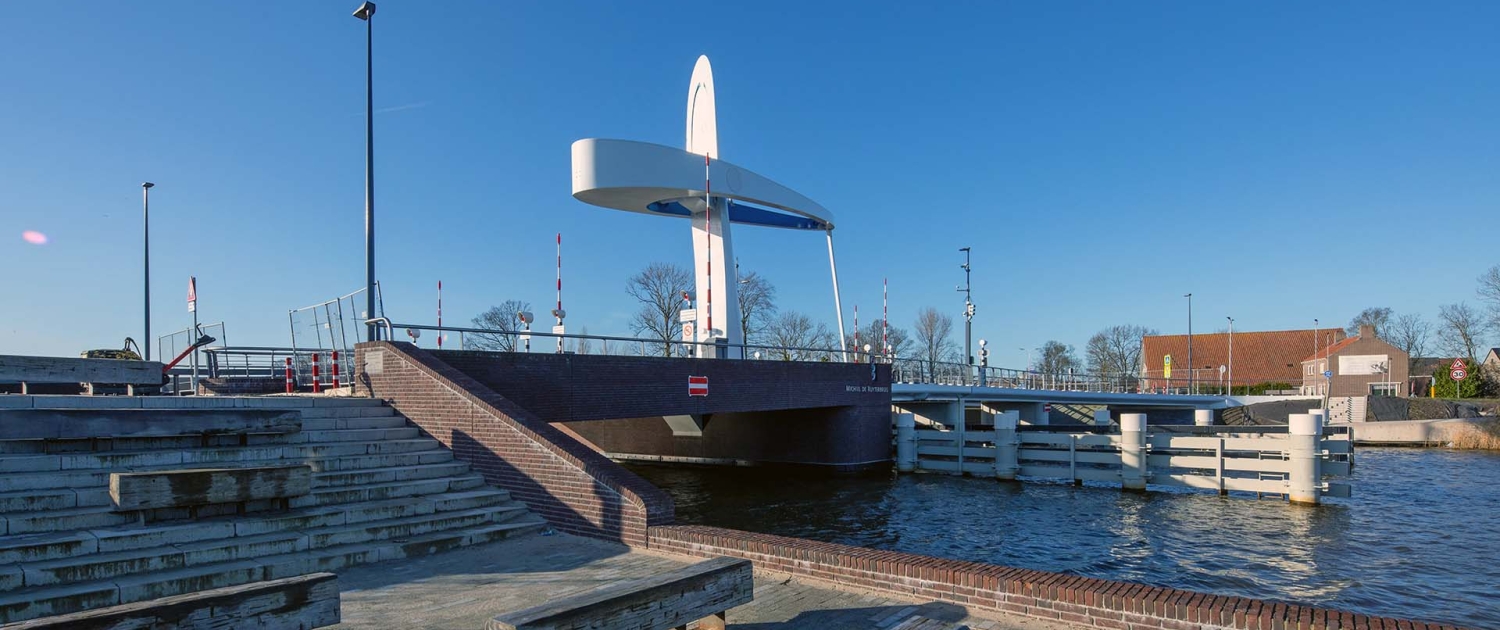
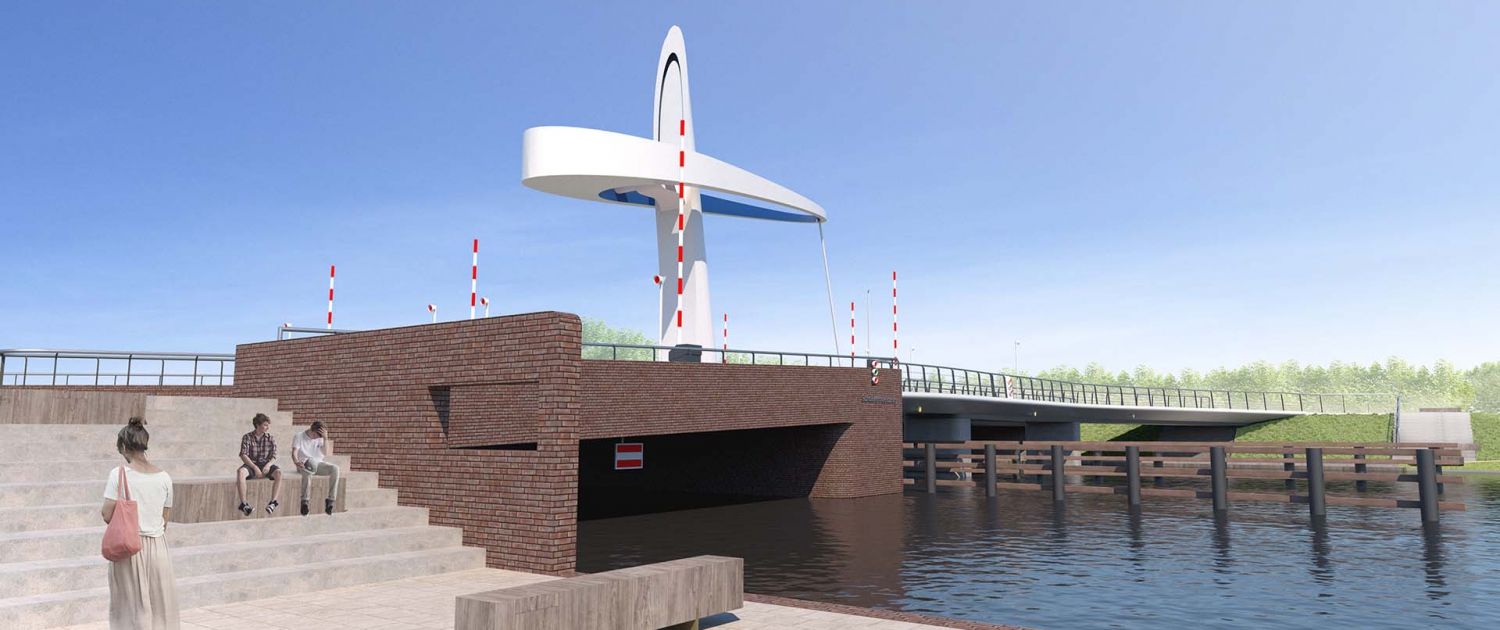
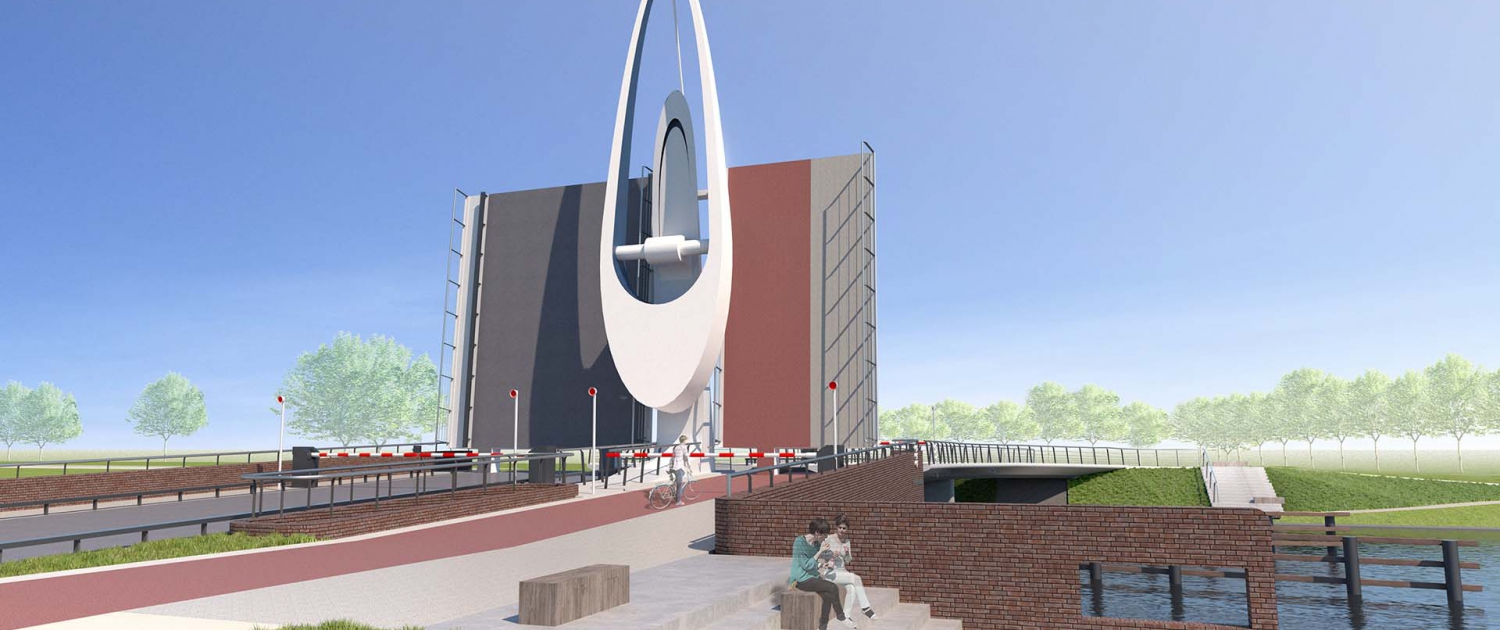
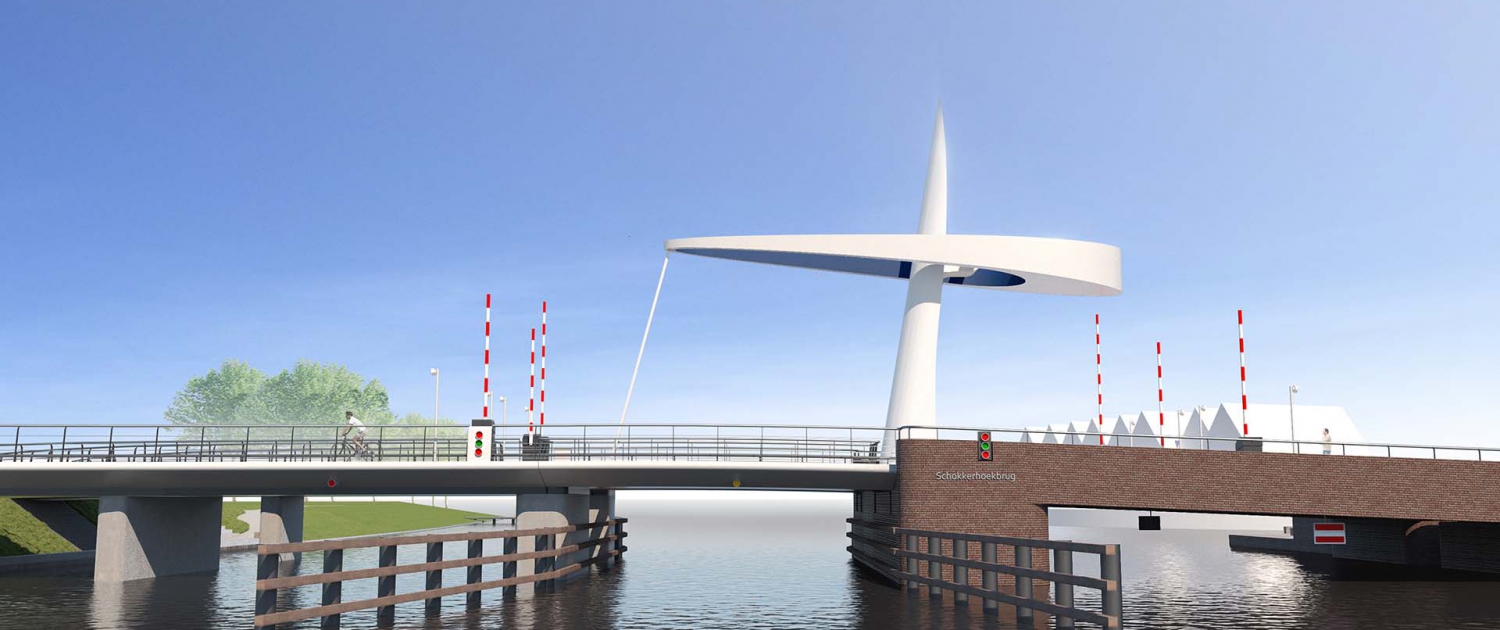

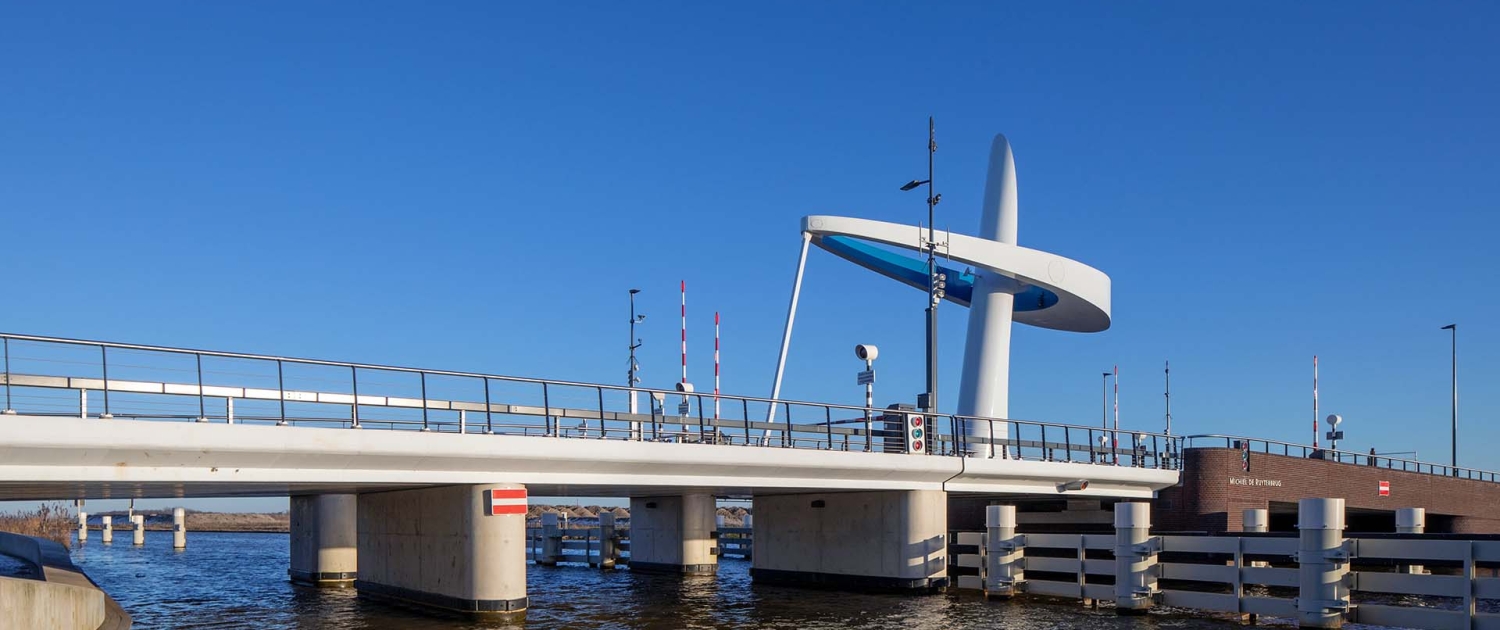

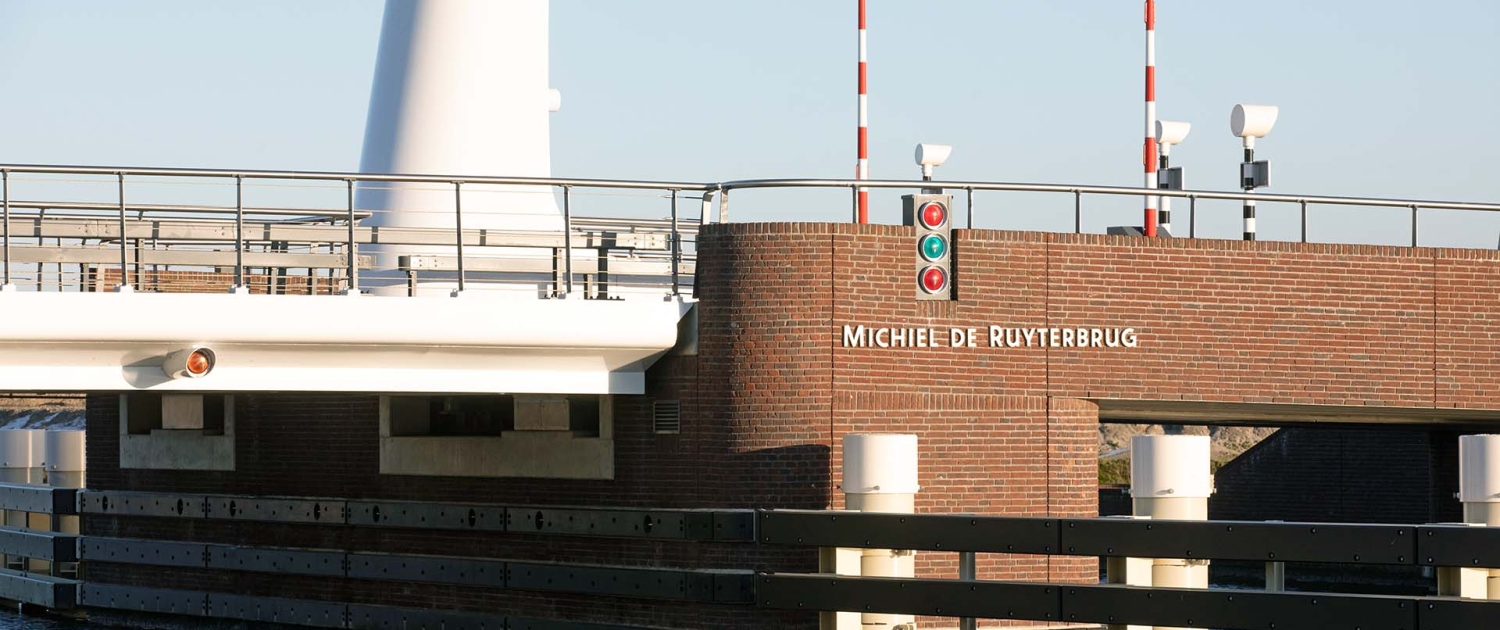
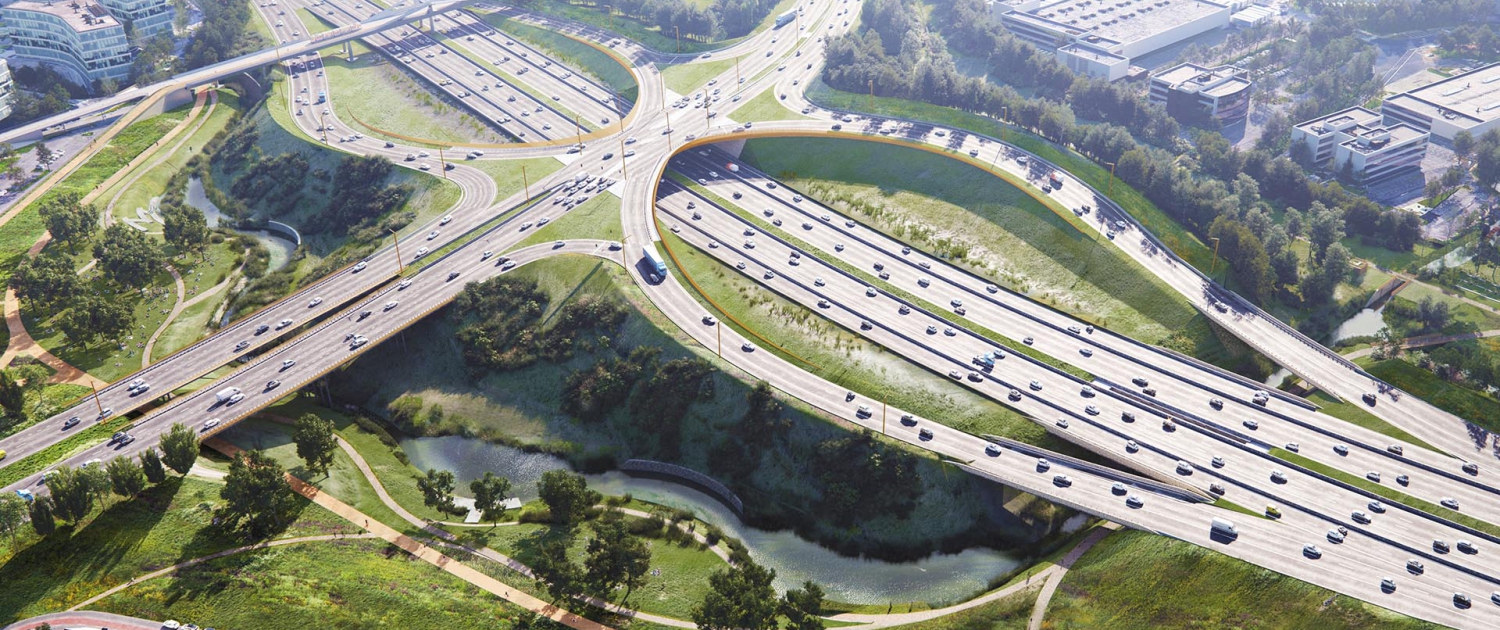 ipv Delft / image by Csaba Banati
ipv Delft / image by Csaba Banati